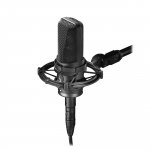Agreed. For me at least, something is really missing without that extra top of the hats and that really high frequency ping of the ride. Maybe it's because I'm a drummer

But I find that the performance sounds more "rich" with that extra top end. That's also a reason I don't like mixing on older era 2" horns that don't have much extension or a lot of breakup at the top of their range. No matter how much EQ boost you give the horns to get the sparkle, it ain't there or it ain't right

The Rat Trap 5s I have in fact have those old 2" JBL 2441s in them that don't go all the way up. But they do have those 1" 18Sound drivers running from 8k on up to take care of the VHF and get the "sparkle".
A local up here who does sound for most of the outdoor events at our fairgrounds has a Meyer M2D array. I never liked the sound of them very much. After looking at the cut sheet, I think I know why: 70-14kHz +/-4dB. They never seem to have any top end. They don't have a published graph of the response, but I suspect above 8k they're rolling off pretty well.

